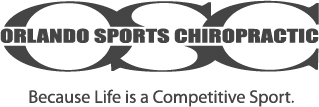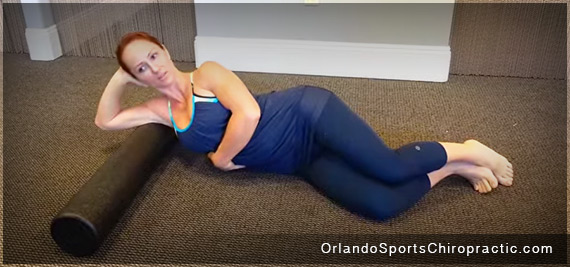Foam Roll That Pain Away – Foam Rolling Techniques For a Healthier Body!
There are very few jobs that do not have some level of computer work these days, and most of those jobs are sitting in one place, all day, working on the computer. For those of us who sit at a desk all day every day, we get the afternoon munchies and yawns. Do you wonder if that’s normal though? What if you had a job where you were on your feet and moving around all day, would you get those afternoon munchies and yawns?
Most likely no. Believe it or not, sitting all day at work can be more stressful and tiring on the body than being on your feet working. If you have one of those ‘cushy” desk jobs, ask yourself a few questions:
- Are you exhausted at the end of the day?
- Do you feel sore and stiff when you get up?
- Is there any motivation in you after work?
If you answered yes to the first two and no to the last question, then this article is for you.
CLICK HERE TO SEE OUR SELECTION OF FOAM ROLLERS
Sitting in the same position all day is eventually going to have a negative impact on your body. Sitting is not a natural position for our bodies. It is meant to be on the move, laying down or standing up. No matter how modernly ergonomic your desk and chair is designed, it is doing you more harm than good to sit all day, every day.
When you stay in one position for an extended amount of time, your muscles freeze in place as well as other physically negative results will occur. Sitting at a desk, you keep your arms and hands extended out in front of you causing your back and shoulders to roll forward, thus the hunched over look that you see older people with, is started.
This “lack of motion” causes the muscles in your back and posterior shoulder to become overextended as well as the muscles in your biceps and chest begin to stiffen and become rigid in one place. This all just describes what is happening to your upper body. As for your lower body, your hips are affected along with your quadriceps from the long-term 90-degree sitting position. They are meant to be moving straight in an unnatural state.
CHECK OUT OUR FOAM ROLLING TECHNIQUES INSTRUCTIONAL VIDEOS
Is this starting to describe the current state of your body? Do your muscle groups feel knotted and tense too?
All this can start as young as your 20’s and by the time you are in your late 30’s to mid 40’s, you have developed that hunched over look that not only affects your appearance, but also puts unnecessary constriction on your lungs, which in turn creates improper breathing and shortness of breath that can lead to an anxious feeling and lack of oxygen circulating throughout your body. If you are already experiencing these aches and pains, if you are already noticing a change in your posture, it isn’t too late to correct it.
Manage Your Pain & Maintain Flexibility With Various Foam Rolling Techniques
One of the easiest ways to get started is Foam Rolling and Self Myofascial Release,(SMR). These are things that will alleviate that pain you’re starting to experience and help your muscles relax back into their natural state. Once the muscles are relaxed, you’ll notice your circulation will increase and all of a sudden, you are feeling more energy again.
Educate Yourself: Think of it this way, your muscles are contracted all day while sitting at your desk at home or at work, develop knots in them and continue to do so day in and day out. Without stretching, exercising, or anything to alleviate these knots, will cause them to stiffen and harden. These knots (or adhesions) limit the range of motion in all of your joints and muscles, which also decreases circulation to those parts. If you can’t get to a massage therapist or it’s not something you can budget for, putting pressure on those knots with alternative devices such as a foam roller or other SMR tools like a lacrosse or tennis ball will help massage the knot out so that muscle groups can return to its intended length.
Foam Rolling Technique For Shins
Glute Foam Rolling Techniques
CHECK OUT MORE FOAM ROLLING TECHNIQUES ON YOUTUBE
Rules of Thumb To Keep In Mind When Foam Rolling
Some key muscle areas to foam roll to help correct posture, and muscle orchestration and alleviate the pain that you are experiencing include the entire back, quadriceps, trapezius, deltoids, latissimus dorsi, inner thighs, and calf muscles. Here’s how you go about it:
- Make sure you use a well-constructed foam roller to provide maximum results and benefits to your healing needs. Click here to view our line of foam rollers.
- Using your foam roller, roll over the core of the muscle group until you find a trigger point or pain point.
- Avoid rolling on or near your joints.
- Apply consistent and even pressure to that point for at least ten to fifteen seconds, but no more than 45 seconds if you are just starting out.
- Rest as needed based on your level of experience, and repeat this process for the rest of the muscle group that needs treatment.
- We recommend focusing on one muscle group per session to get the most out of your time with the foam roller.
For additional instructions and visual demonstrations, you can click here to go to our Foam Rolling Techniques Video tutorials by Dr. Sabrina Atkins, DC.
Keep in mind that the act of rolling itself is only used to identify the location of knots in your muscles. The static pressure that you apply to the trigger point or knot that needs treatment is what flattens it out.
Mobile Treatment: Take It to Work
One of the best features about foam rollers and other SMR devices like lacrosse and tennis balls are that they are inexpensive, portable ad easy to store away. Bring them with you to work and leave them in the office. Try to take ten to twenty minutes during your workday or lunch break to roll out your trouble areas.
Here’s to your health and a better way of life!

